Designing the Soleil expansion
Hello, Mages!
Welcome to another game design talk about one of our upcoming expansions. Today, let’s delve into the burning ball of scorching fire, the distant ongoing nuclear explosion that gives us life. Today, we’re discussing the Sun.
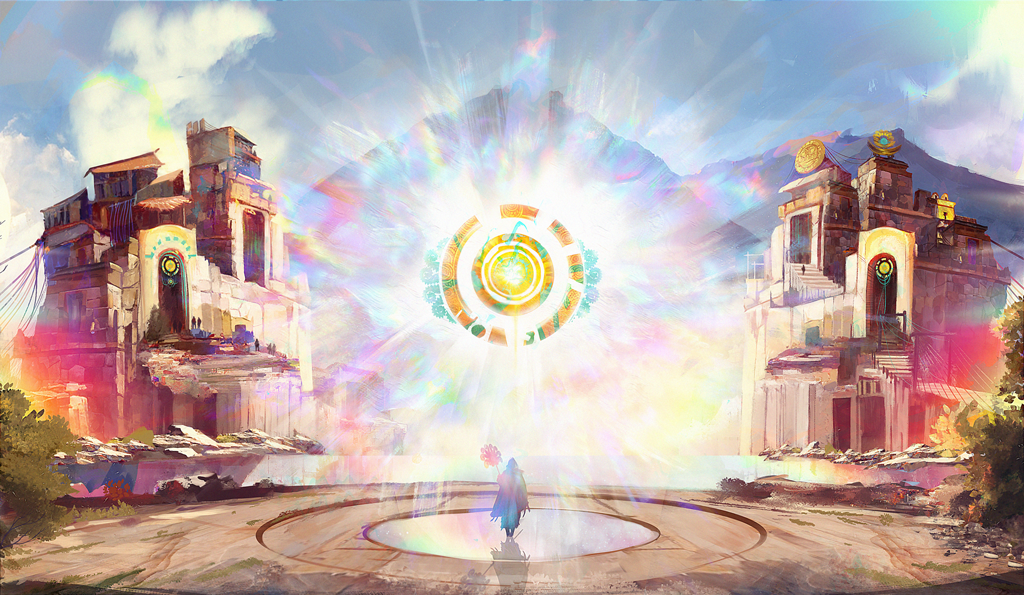
Sun catalyst by Jeffrey Jeanson
Why opt for a solar expansion?
Fire, as a base element, is simple. It is powerful, knows what it wants to do, and executes it well. This leaves Fire in a pretty good place in terms of gameplay. However, most Fire decks revolve around going for big one-shots and straightforward damage.
This is a perfectly fine game plan, but what if you want to play Fire with a more meticulous and measured approach? Then you wouldn’t have a lot of options.
That’s why we aimed to create a more late-game-based approach to Fire’s explosive damage output. This is the primary reason why we chose the Sun as our next Fire theme.
The second reason stems from a more flavorful and thematic approach. We want Mage Noir to portray the elements in various ways. In the base game, Fire is presented as grim, destructive, and dangerous. While this is true, it is also incomplete. Fire also brings warmth, light, and a host of very convenient advantages. The Sun emerged as the best way to capture this warmth and light. So, we went for it. Needless to say, the Sun’s potential affinity with a desert-themed and a flower-themed expansion also played a significant role in its selection.
A warm yet scorching light
In Incan myths, the Sun is revered as one of the most powerful gods. Enchanted by its ability to bring life and energy, an Incan Mage endeavored to recreate and harness the sun’s power. Her goal was to bring warmth, energy, and light to assist her people in their daily struggles. After numerous trials and errors, she eventually succeeded in creating a catalyst capable of channeling the sun’s essence.
During her experiments deep in the mountains, she was discovered by her religious peers. Unhappy that she sought to rival the power of a god, she was condemned for blasphemy. Faced with condemnation, she used her newfound discoveries to defend herself, leading to the unfortunate deaths of those who had uncovered the fruits of her research.
Horrified by the unintended consequences of her actions, she destroyed the catalyst and withdrew from society, vowing never again to wield magic.
So, what is the Sun about?
For the Sun, there were three things we wanted to work with.
- It is radiant.
- It is warm.
- It has a Zenith.
While the Sun is far away, it brings light and warmth, providing us with much-needed resources and fueling the earth with energy.
However, the Sun is also scientifically a huge burning ball of flames, causing several nuclear reactions in chains that would have burned us to a crisp long ago if the earth didn’t have a magnetic field. And remember: in Mage Noir, magic is science, and science is magic.
So from a design standpoint, it needs to be supportive, but it also needs to pack a severe punch.
What we did with the Sun
To portray the Sun’s warmth, we wanted this expansion to have helpful effects. This would give fire a bit more depth and detach it from the unidimensional “burn everything” playstyle. Cards like “Radiant light” or “Light ray” show how the Sun can bring energy and help players get stronger and more efficient.
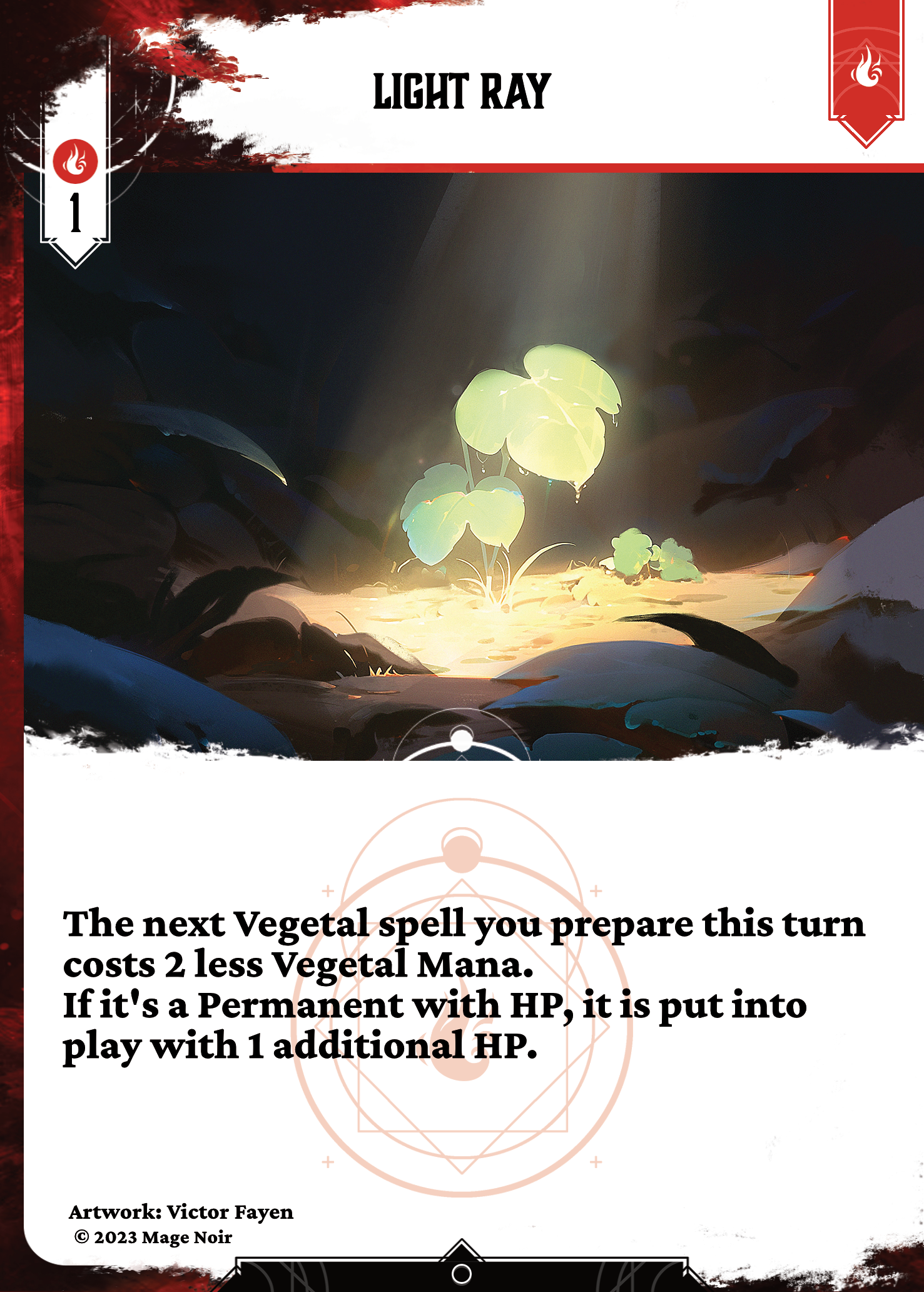
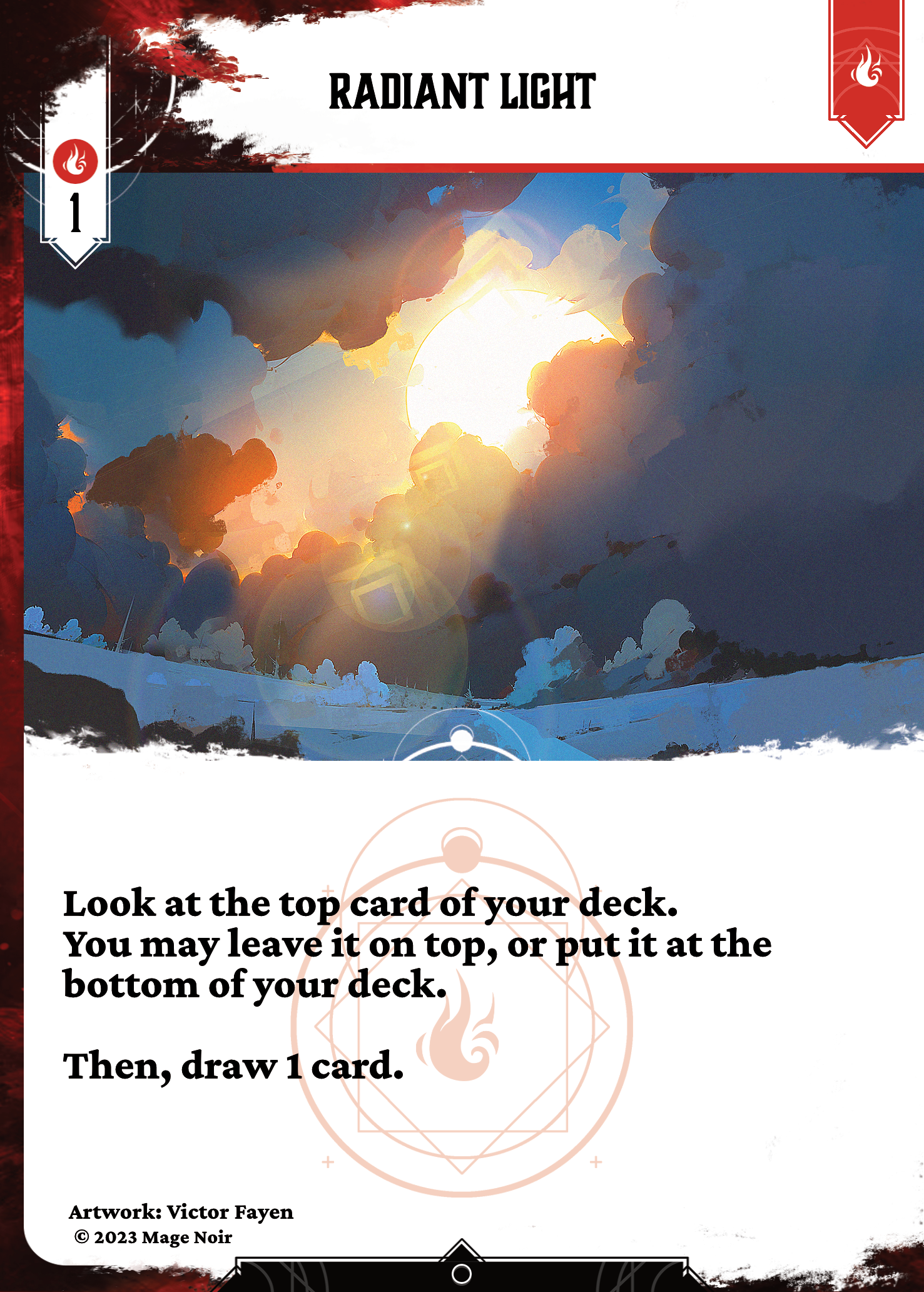
A very common “supportive” effect is healing, and while the Sun can indeed make plants stronger (as implemented in Light ray), we did not want any Fire spell to provide any form of healing for the player. Fire should still put you in danger, not out of it. This realization made us think really hard of the kind of supportive effects an aggressive element like Fire would and wouldn’t use. Ideas like rekindling freshly lost spells with Solar invocation or reheating spells that are dormant with the Zenith’s ritual ability are results of all these reflections.
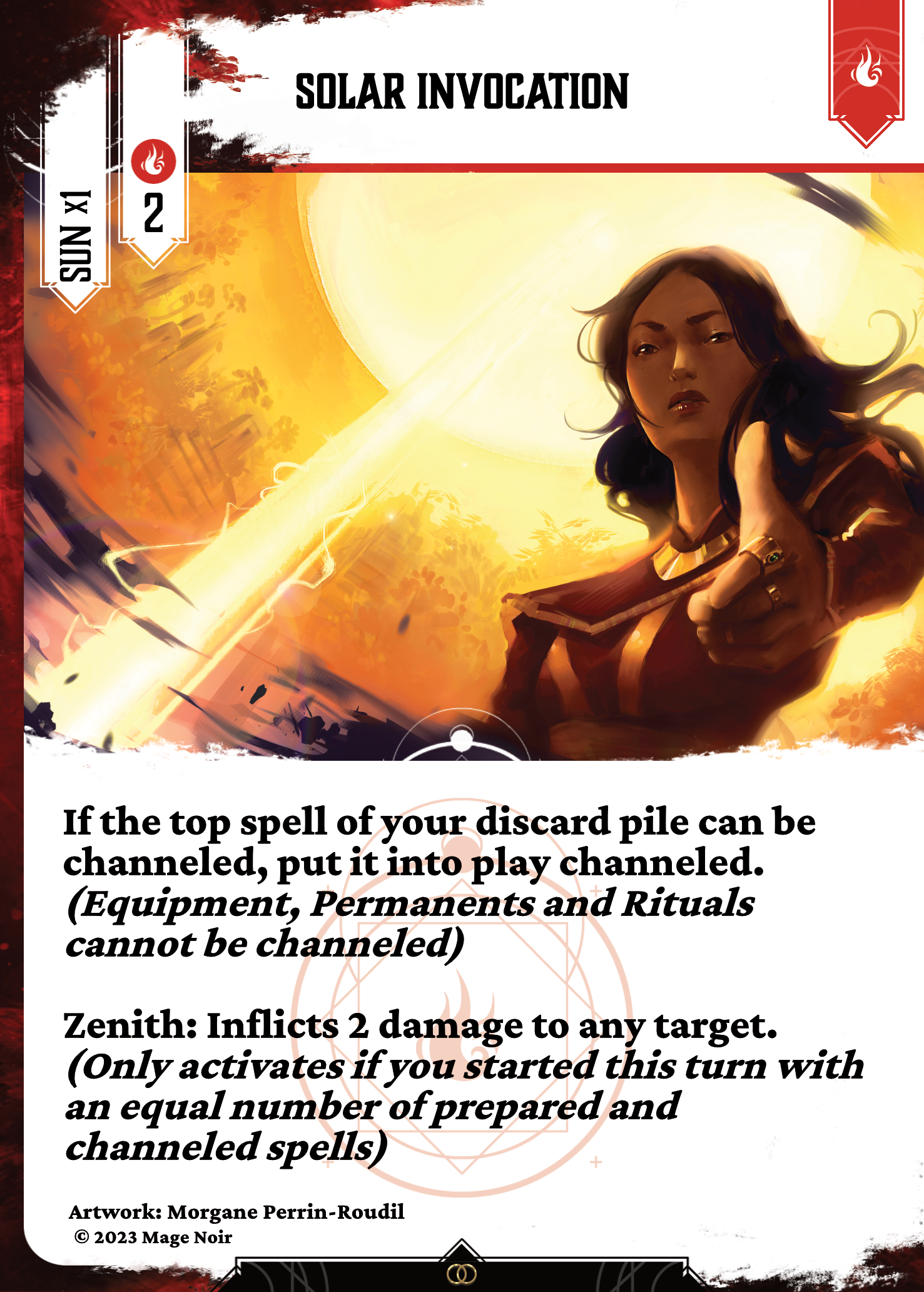
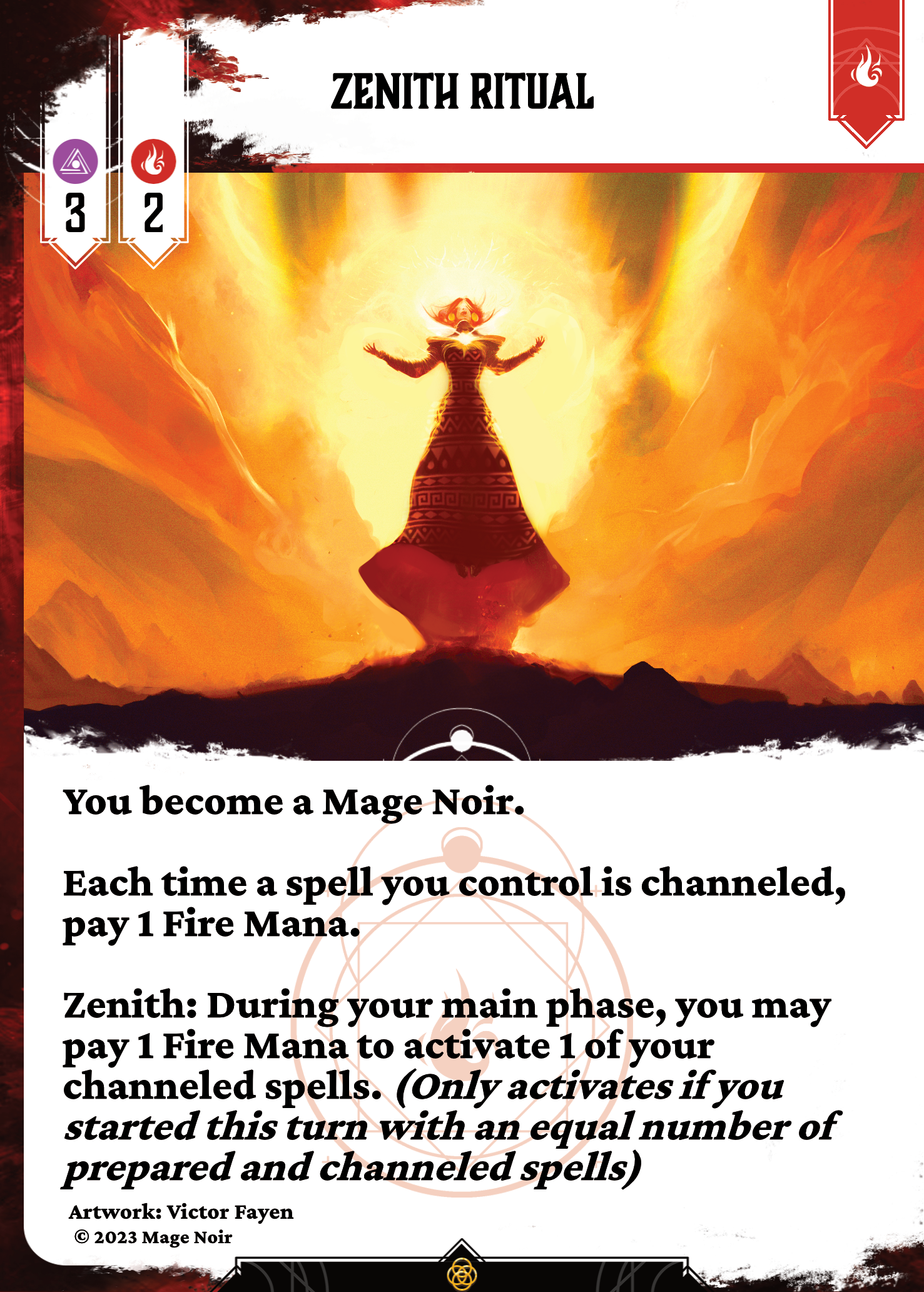
Now that warmth is out of the way, the next concept we thought about was the Zenith mechanic.
Zenith was initially thought as “You are at Zenith when you have the same amount of channeled and prepared spells”. Meaning you would get in and out of Zenith as you played cards during your turn. We wanted Zenith to be a precise moment where you would be at the apex of your power, just like the Sun is at the apex of its trajectory.
This initial implementation that would enable and disable Zenith during your turn was fun to play with but the mental gymnastics it required was way too much for our liking. We thus went through several iterations, a lot of them were finicky, too simple to enable or didn’t require any planning or commitment.
The idea of keeping the initial concept but making it last for a turn ended up being the one we went for. It is much easier to wrap your head around, but still requires the player to commit to a playstyle with a low amount of channeled spells. It would also be what the Soleil expansion needed, as it would pair nicely with the sun components as well as shape the sun’s main weakness.
Radiant Sun components
The last key concept was about the Sun being radiant. As such it had to be the center of the expansion. Up until there, Mage Noir had smaller spells as components that would ramp up in power. Gentle breezes growing into mighty tornados or small seeds giving birth to forests.
For the Sun, we wanted to make what we call a “descending” expansion. Starting from a very big and quite powerful component that would allow the player to cast smaller spells. As such, the Sun needed to be central. It had to be the key piece, but it also had to take your attention. Which is why:
- Most spells from the expansion only use Sun components.
- They have big effects that will either force the opponent to try to take it down, or that will affect you and your opponents health.
However, Sun spells being this central to the deck, would make the expansion literally impossible to play if you don’t draw one. Which is why we needed a card to fetch you one if needed. Did you notice that Vegetal is the only element that allows you to search for specific cards in your deck? This was the perfect opportunity to put in a splash of Vegetal in the expansion. We had the perfect candidate to find the Sun. The plant which is said to always look at it. The sunflower of course.
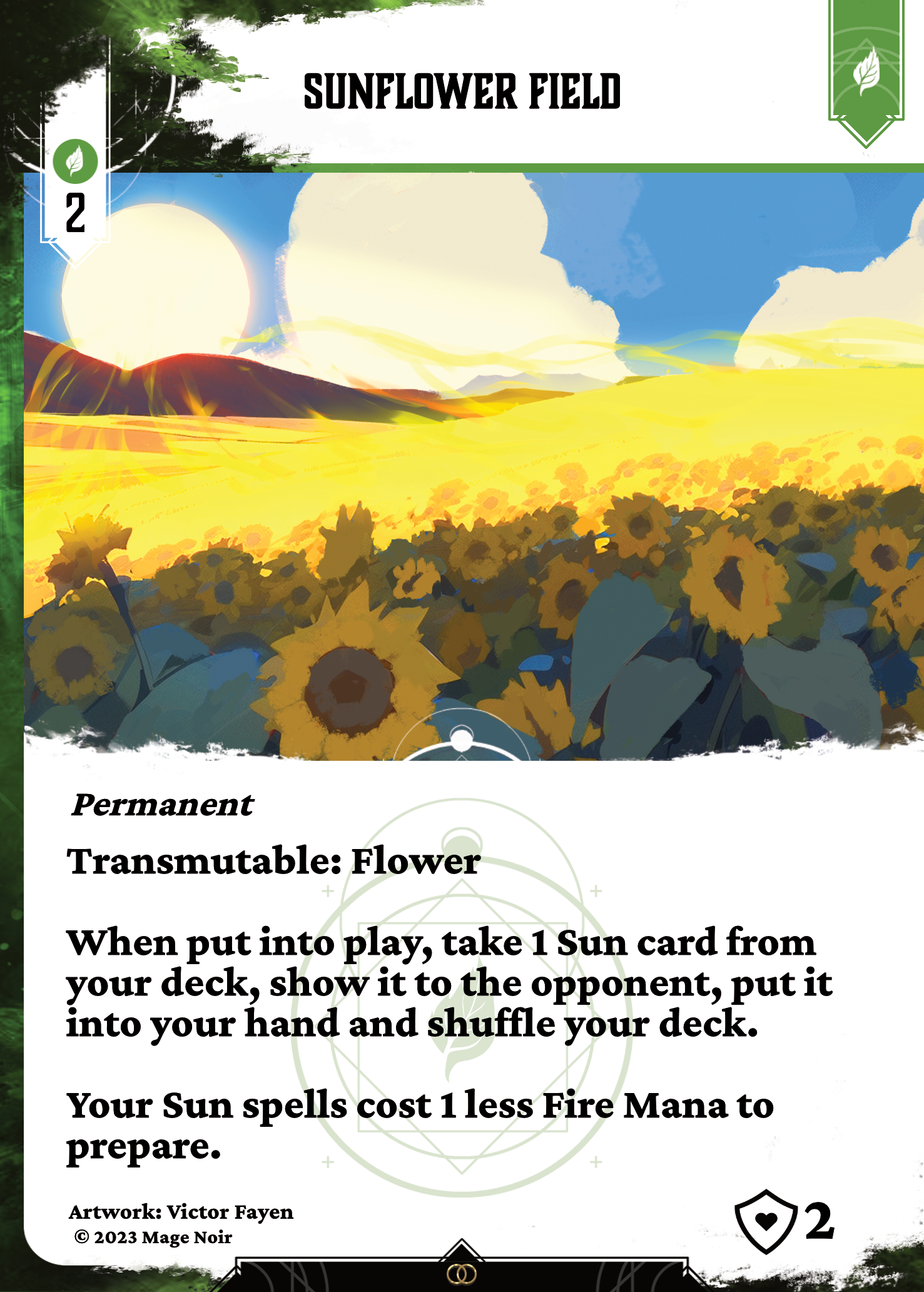
Now we had concepts, a clear component identity. But we needed one last thing, and fortunately, it was already taken care of.
Put on your sunscreen
If you followed well, we briefly wrote about the Sun’s main weakness when we explained the Zenith mechanic. But we didn’t explain what it was.
The Soleil expansion leaves quite a lot of options to interact with it. Two main ones actually.
The first one is how central Suns are. Block the Sun or destroy it in any way, and your opponent is now out of options before he can put another one. Simple removals can go great lengths to slow down your radiant opponent.
The second one is to mess with their Zenith setups. If you don’t have what is needed to remove their suns, you can at least make their spells become Slow to force them to have more prepared spells than they’d want, or even remove some of them with your own spells. You would get double the advantage, because on top of removing their spell, you would also make them lose a full turn of Zenith effects, slowing them down even more.
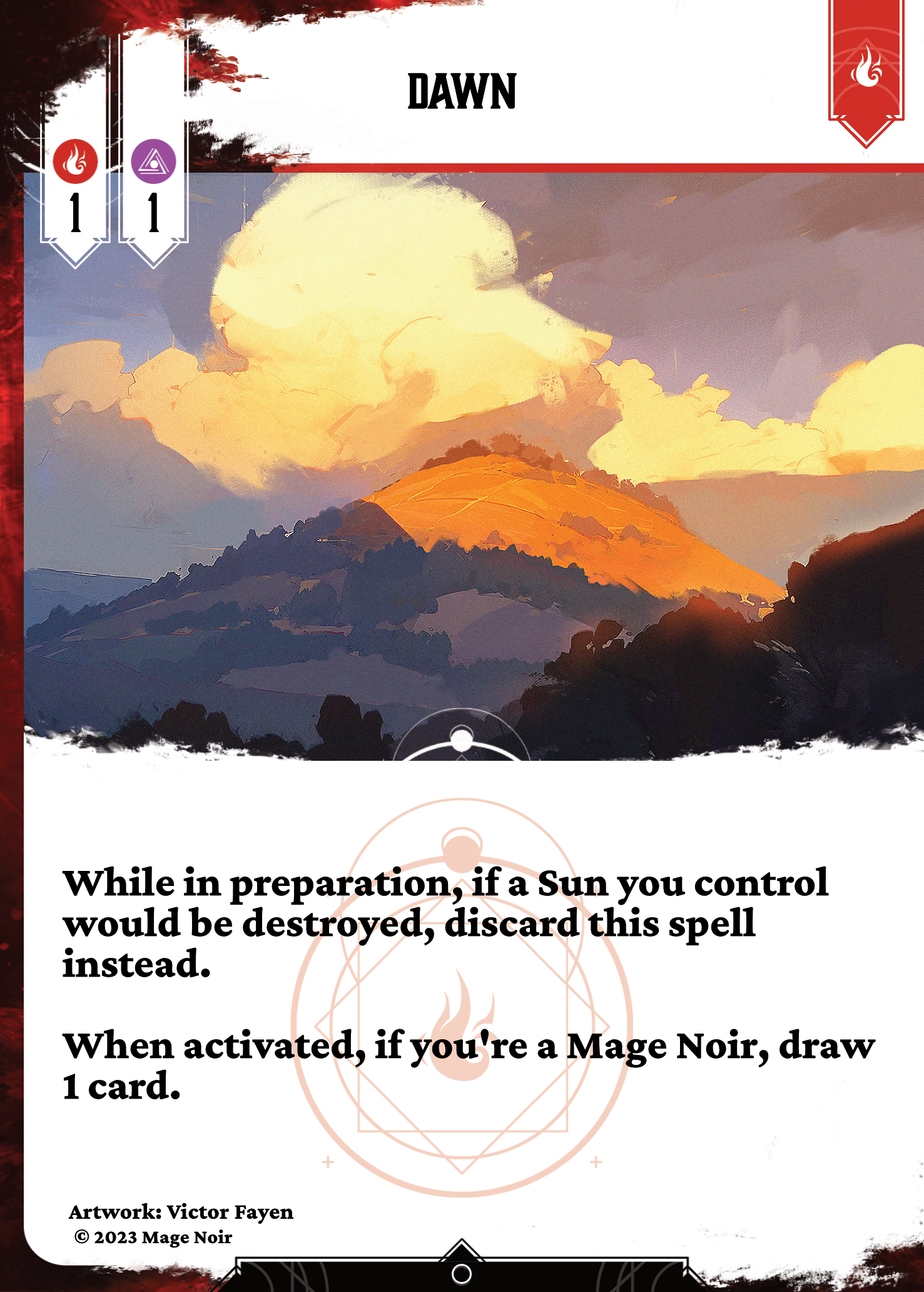
Although if you are playing a Sun deck and get bothered too often, wait for the next dawn, it gets you farther from the Zenith, but it also means the Sun is there, whatever happens.
See you next time Mages!
The Soleil expansion was a fun one to make as it forced us to think upside down with how components work. Although, while it does work in a weird way, it can create some monstrous combos and has a massive damage output when used properly.
We hope you’re eager to fry your opponents. The Sun is a deadly lazer as they say.
We’ll see you later for another talk about the next expansion. Until then, take care of yourselves Mages, and have fun!
~ Everyone at Double Combo Games